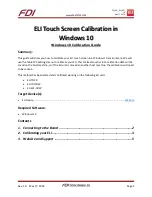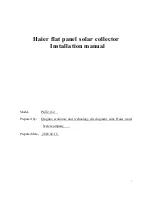
2-7
56(6WDQGDUG
The RS-232-E standard defines the electrical and mechanical characteristics of an interface
between data terminal equipment (DTE) and data communication equipment (DCE) that uses
serial binary data interchange.
NOTE
The TCS is data terminal equipment (DTE) as described by the RS-232-E standard. As a DTE unit, the TCS
is connected to data communication equipment (DCE), such as a modem. Connection to another DTE unit
requires the use of a null-modem cable.
The RS-232-E standard specifies unbalanced transmission, which uses a single high-low signal
line referenced to signal ground. The standard assigns functions to the circuit on each pin of the
RS-232-E connector. Signal voltage level and timing requirements are prescribed by the
standard, but framing format and baud rate can vary among RS-232-E compatible devices. The
RS-232-E standard also assigns gender to individual connectors: the RS-232-E connector is male
on DTE and female on DCE.
56(6LJQDO'HVFULSWLRQV
RS-232-E was originally designed as a computer interface for use over telephone lines. Because
of this, signals have names like Received Line Signal Detector (RLSD). The line referred to is
the telephone line. Since the introduction of the standard, more ways of using RS-232-E have
been developed. For example, instead of using telephone lines, a specially wired cable called a
null-modem cable can be used to directly link two DTE units, such as the TCS and a host
computer. The DTE units at each end of the null-modem cable interpret the cable as two modems
communicating over telephone lines.
RS-232-E signals used by the TCS are described below. It is not necessary to understand each of
these signals to program the TCS; this information is provided to help interface the TCS with
different types of DCE devices. The circuit designations defined in RS-232-E are given in
parentheses after each signal name, (for example, AA).
NOTE
When an RS-232-E control signal is on, its voltage is +3 V to +25 V. When the control signal is off, its
voltage is -3 V to -25 V. When an RS-232- C data transmit and receive signal is in mark (one) condition, its
voltage is -3 V to -25 V. When the data signal is in space (zero) condition, its voltage is +3 V to +25 V.
•
Protective Ground (AA)
Protective Ground is the common chassis ground of the TCS.
•
Signal Ground (AB)
Signal Ground is the common reference for the data and control lines.
•
Transmitted Data (BA) (Output)
Transmitted Data carries the stream of bits generated by the TCS and sent to the DCE.
•
Received Data (BB) (Input)
Received Data carries the stream of bits generated by the DCE and received by the TCS.
Содержание Dynapro ET TCS
Страница 1: ......
Страница 127: ...5 40 LJXUH QFRGLQJ WKH 6L HOV...
Страница 194: ...6 4 LJXUH 7RXFKNH 9LVXDO WHQW...
Страница 310: ......
Страница 311: ......
Страница 312: ......
Страница 313: ......
Страница 314: ...ASCII Code Custom Character Pattern Chart ASCII Code ASCII Code ASCII Code...
















































